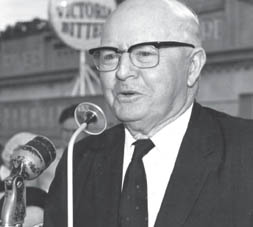 |
 |
|
Crossing the Edward River
The year the Berriquin Irrigation District opened work also began on the Lawson Syphons, near Deniliquin. These syphons would carry the Mulwala Canal beneath the Edward River, westward to supply water to the Deniboota Irrigation District. Work was expected to take four years, but a few weeks after NSW Premier Alex Mair turned the first sod on construction Australia was launched into World War II.Initial planning and other preparations continued until 1942 when work was finally suspended due to a shortage of materials and manpower. By this stage the Mulwala Canal had reached the Edward River. An escape adjacent the river channelled flows from the canal into the river. Work on the syphons resumed at the end of the war, in 1945. It continued for the next decade, hampered by repeated flooding in the Edward River and continuing material and labour shortages. The NSW Government had trouble at times raising loan funds for major works, but the Lawson Syphons and Deniboota scheme were high on the list of projects “in the national interest” and received priority. The Lawson Syphons were completed in 1955 and officially opened by NSW Premier John Cahill on April 27, 1955. |
Joseph Alexander Lawson, MLA
NSW Member for Murray 1932 ~ 1973 Country Party The Lawson Syphons are named after Mr Joe Lawson who was instrumental in securing government support for the development of the region. Elected as the Member for Murray during the Depression in 1932, Mr Lawson was an ardent advocate of irrigation. When he first came to parliament, NSW used virtually none of its share of the Murray River’s waters. When he left parliament, in 1973, the Southern Riverina districts were using around one million megalitres a year. |
|
| sitemap • credits
& references • copyright • local
history links • contact & contribute • VISITORS |
||

